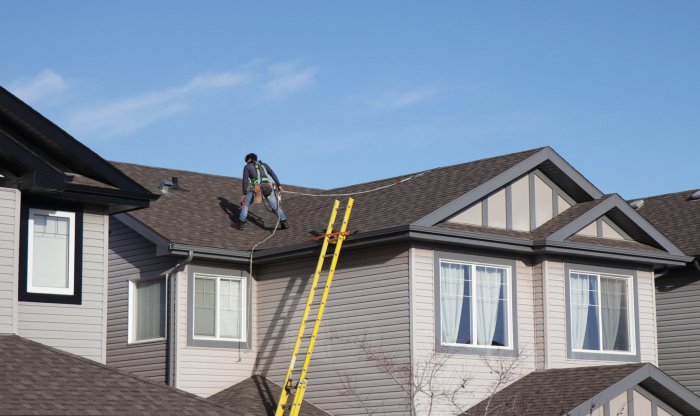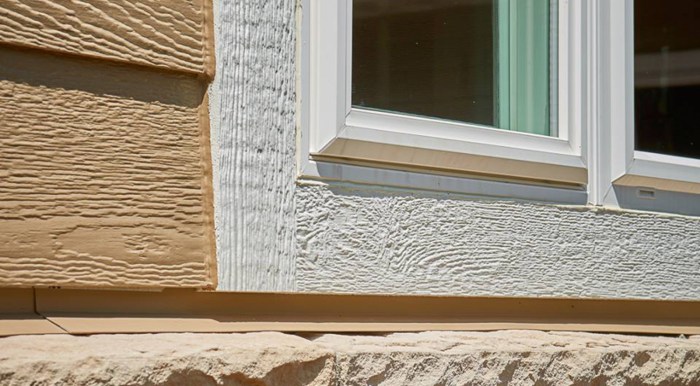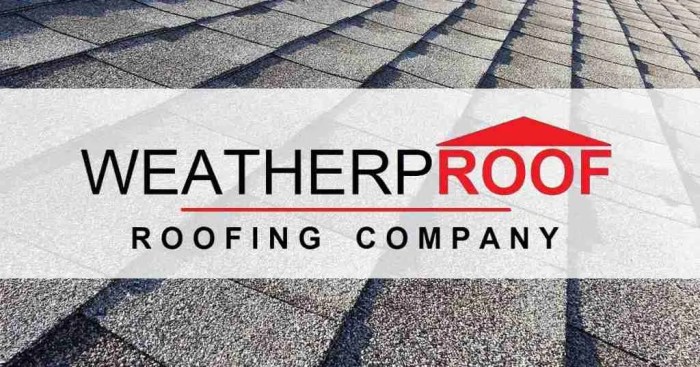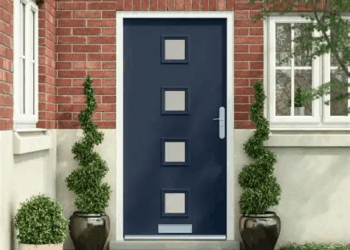
Top 5 Exterior Contractors for Weatherproof Exteriors introduces readers to a world where expert craftsmanship meets the elements head-on. From selecting the perfect contractor to understanding the techniques behind weatherproofing, this journey promises insights that go beyond the surface.
As we delve deeper into the realm of exterior contractors, a tapestry of knowledge unfolds, revealing the intricate details that shape our built environment.
Research the Top 5 Exterior Contractors for Weatherproof Exteriors
When it comes to weatherproofing your home, selecting the right exterior contractor is crucial. Here, we will delve into the key factors to consider when choosing a contractor, compare the services offered by the top 5 contractors, and explore their reputation through customer reviews.
Key Factors to Consider When Selecting an Exterior Contractor for Weatherproofing
- Experience: Look for contractors with a proven track record in weatherproofing projects.
- Expertise: Verify that the contractor specializes in weatherproofing exteriors and has the necessary skills and knowledge.
- Licenses and Insurance: Ensure that the contractor is licensed and adequately insured to protect yourself and your property.
- Materials and Techniques: Consider the quality of materials used and the techniques employed by the contractor for weatherproofing.
- Pricing: Obtain detailed quotes from each contractor and compare them to ensure transparency and value for money.
Comparison of Services Offered by the Top 5 Contractors
| Contractor | Services Offered |
|---|---|
| Contractor A | Specializes in exterior waterproofing, offers free inspections, and provides long-term warranties. |
| Contractor B | Provides a range of weatherproofing solutions, including sealing, caulking, and insulation services. |
| Contractor C | Focuses on energy-efficient weatherproofing solutions and uses eco-friendly materials. |
| Contractor D | Offers custom weatherproofing plans tailored to each client's needs and budget. |
| Contractor E | Specializes in weatherproofing historical buildings and heritage sites. |
Reputation and Customer Reviews of the Top 5 Contractors
Contractor A has received rave reviews for their prompt service and attention to detail.
Customers praise Contractor B for their professionalism and thoroughness in their weatherproofing work.
Contractor C is known for their excellent customer service and commitment to sustainability.
Contractor D's clients appreciate the personalized approach and reliability in completing projects on time.
Contractor E has garnered a reputation for preserving historical structures while ensuring they are weatherproofed effectively.
Understanding Weatherproofing Techniques

Weatherproofing is essential for protecting a building's exterior from the elements and ensuring its longevity. Exterior contractors use various techniques to achieve weatherproofing, including:
1. Sealants and Caulking
Contractors often use sealants and caulking to fill gaps and cracks in the exterior walls, windows, and doors. This helps prevent water infiltration and air leakage, maintaining a tight seal against moisture.
2. Waterproof Membranes
Waterproof membranes are applied to the exterior surfaces to create a barrier against water penetration. These membranes are particularly effective in areas prone to heavy rain or snow, providing an extra layer of protection.
3. Exterior Insulation
Adding insulation to the exterior walls not only improves energy efficiency but also helps in weatherproofing. Insulation materials like foam board or spray foam can prevent heat loss and reduce the risk of moisture damage.
4. Proper Drainage System
Ensuring proper drainage is crucial for weatherproofing. Contractors install gutters, downspouts, and drainage channels to redirect rainwater away from the building, preventing water pooling and potential water damage.
5. Durable Exterior Finishes
Choosing durable exterior finishes, such as high-quality paint or siding materials, can enhance weatherproofing. These finishes can withstand harsh weather conditions and protect the building from moisture, UV rays, and other environmental factors.
Materials and Products for Weatherproofing
Exterior contractors utilize a variety of materials and products for weatherproofing, including:
- Weather-resistant sealants and caulking
- Waterproofing membranes
- Insulation materials like foam board or spray foam
- Gutters, downspouts, and drainage systems
- Durable exterior finishes such as quality paint or siding
Examples of Successful Weatherproofing Projects
Top exterior contractors have completed numerous successful weatherproofing projects, showcasing their expertise in the field. Some notable examples include:
- Installation of waterproof membranes on a commercial building in a rainy climate, preventing water damage and maintaining the building's structural integrity.
- Implementation of a comprehensive drainage system for a residential property, effectively managing rainwater runoff and protecting the foundation from moisture-related issues.
- Application of high-quality sealants and caulking on windows and doors of a historic building, preserving its architectural elements while enhancing weather resistance.
Importance of Weatherproof Exteriors

Weatherproof exteriors play a crucial role in maintaining the integrity and longevity of a building. By protecting the structure from harsh weather conditions, a weatherproof exterior offers several benefits that contribute to the overall health and efficiency of the property.Weatherproofing can significantly increase the energy efficiency of a building by minimizing heat loss during cold seasons and preventing heat gain during hot seasons
By sealing off air leaks and improving insulation, weatherproof exteriors help regulate indoor temperatures, reducing the reliance on heating and cooling systems. This not only leads to lower energy bills but also reduces the carbon footprint of the property.Moreover, weatherproofing can prevent damage to the structure over time.
Exposure to rain, snow, wind, and other elements can gradually wear down a building's exterior, leading to issues such as water infiltration, mold growth, rotting wood, and corrosion. By creating a protective barrier against these elements, weatherproof exteriors help maintain the structural integrity of the building, prolonging its lifespan and reducing the need for costly repairs.
Benefits of Weatherproof Exteriors:
- Enhanced energy efficiency through reduced heating and cooling costs.
- Prevention of water infiltration, mold growth, and structural damage.
- Extended lifespan of the building with fewer maintenance requirements.
- Improved indoor comfort and air quality.
- Increased property value and curb appeal.
Factors to Consider When Hiring an Exterior Contractor
When hiring an exterior contractor for weatherproofing your home, it is crucial to evaluate their expertise, experience, and reliability. Here are some key factors to consider:
Evaluating Expertise and Experience
- Check the contractor's portfolio to see examples of their previous work related to weatherproofing exteriors.
- Ask for references and follow up with past clients to get feedback on the contractor's performance and professionalism.
- Inquire about the contractor's training, certifications, and experience in weatherproofing techniques to ensure they are knowledgeable in the field.
Designing a Checklist for Homeowners
- Verify that the contractor is licensed, bonded, and insured to protect yourself in case of any accidents or damages during the project.
- Request a detailed written estimate outlining the scope of work, materials to be used, and project timeline to avoid any misunderstandings later on.
- Ensure the contractor provides a warranty for their work to guarantee that any issues post-installation will be taken care of without additional costs.
Tips for Negotiating Contracts and Pricing
- Compare quotes from multiple contractors to get a better understanding of the market rates and avoid overpaying for the services.
- Negotiate payment terms and schedules to ensure that you are comfortable with the financial arrangements before starting the project.
- Clarify any potential additional costs or unforeseen expenses that may arise during the project to avoid surprises in the final bill.
Case Studies and Real-Life Examples
Weatherproofing plays a crucial role in protecting buildings from the elements, ensuring their longevity and structural integrity. Let's explore some case studies and real-life examples where weatherproofing solutions made a significant difference.
Case Study 1: High-Rise Apartment Building in Coastal Area
In this case, a top exterior contractor implemented a comprehensive weatherproofing plan for a high-rise apartment building located in a coastal area prone to high winds and saltwater exposure. The contractor used advanced sealants and coatings to protect the building's exterior from corrosion and water infiltration.
Innovative technologies such as air barriers and drainage systems were also incorporated to enhance the building's resilience against harsh weather conditions.
Case Study 2: Historic Landmark Restoration Project
For a historic landmark restoration project, another top exterior contractor employed customized weatherproofing solutions to preserve the building's unique architectural features while ensuring optimal protection. The contractor utilized breathable membranes and specialized coatings that offered both weather resistance and breathability, allowing the building to maintain its historical charm while safeguarding it against moisture damage.
Case Study 3: Commercial Office Building in Extreme Climate
In an extreme climate zone, a leading exterior contractor applied cutting-edge weatherproofing techniques to a commercial office building facing temperature fluctuations and heavy precipitation. The contractor utilized thermal insulation systems and waterproof membranes to create a durable and energy-efficient envelope, protecting the building from heat loss and water intrusion.
These innovative approaches not only improved the building's energy performance but also extended its lifespan.
Case Study 4: Residential Housing Development in Urban Setting
In an urban setting with high pollution levels and urban heat island effect, a reputable exterior contractor implemented weatherproofing solutions for a residential housing development to enhance indoor comfort and air quality. The contractor installed advanced facade systems with integrated air and moisture barriers to mitigate environmental impacts and improve the overall sustainability of the buildings.
By addressing unique challenges associated with urban environments, the contractor successfully created weatherproof exteriors that promoted occupant well-being.
Case Study 5: Industrial Facility Retrofit for Enhanced Durability
For an industrial facility retrofit project, a top exterior contractor utilized innovative weatherproofing technologies to enhance the durability and performance of the building envelope. The contractor applied high-performance coatings and sealants to protect the structure from chemical exposure and mechanical wear.
By tailoring weatherproofing solutions to the specific needs of the industrial facility, the contractor successfully extended the service life of the building and minimized maintenance costs.
Outcome Summary

As we wrap up our exploration of the top 5 exterior contractors for weatherproof exteriors, one thing remains clear: the foundation of any structure lies in the hands of those who safeguard it from nature's wrath.
Frequently Asked Questions
What are the key factors to consider when selecting an exterior contractor for weatherproofing?
Factors to consider include experience, reputation, expertise in weatherproofing techniques, and customer reviews.
How can weatherproofing increase the energy efficiency of a property?
Weatherproofing helps to seal any gaps or leaks in the building envelope, reducing heat loss and improving overall energy efficiency.
What is the importance of having a weatherproof exterior for a building?
A weatherproof exterior protects the structure from water damage, reduces maintenance costs, and enhances the longevity of the building.
What criteria should homeowners use to evaluate the expertise of exterior contractors?
Homeowners should consider factors such as certifications, past projects, client testimonials, and warranty offerings when evaluating contractors.
Can you provide examples of successful weatherproofing projects done by these top 5 contractors?
Examples include projects where innovative weatherproofing solutions were tailored to specific building types and climates, ensuring long-lasting protection.












